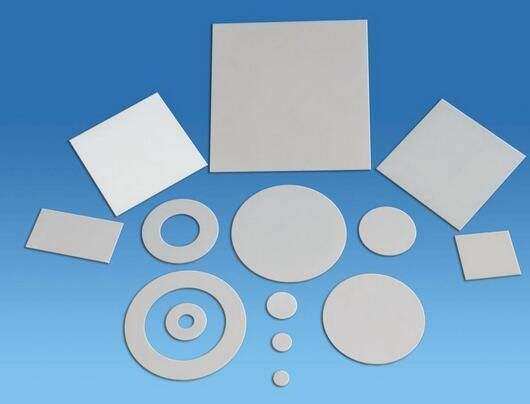1.氮化铝绝缘瓷
在氮化铝陶瓷中常用的添加剂有Y2O3、 CaO等,含CaO的氮化铝材料,烧结温度较低,热导率约100W/ (m·K) 。在生产过程中,对多晶氮化铝陶瓷的显微结构进行优化控制有着重要的意义。含氧化钙无压烧结的氮化铝材料在非氧化气氛下进行热处理后,氮化铝陶瓷体的热导率高达219W/ (m·K) 添加Y2O3, 可以改善其导热性、耐热性及机械强度。
作为封装或基板材料,陶瓷表面常涉及金属化问题。虽然氮化铝和钨具有良好的热胀匹配性,但由于两者间不存在任何反应难以建立起理想的结合机制。在钨粉中加人熔剂类物质,如CaO可改善金属化性能,熔剂类物质的主要作用是可与氮化铝表面的 Al2O3形成铝酸盐物质,并能沿 AIN 晶界迁移,从而加强了AIN与钨粉间的结合强度。
用于集成电路基片可以提高集成电路的集成度。

氮化铝陶瓷基板
2. BN绝缘瓷
氮化硼(BN) 具有良好的导热性能,理论估计立方 BN单晶导热率高达 1300W/ (m·K) 。六方(石墨)和三方BN 都具有层状结构。
六方(石墨)BN具有良好的导热性、机械加工性能、高频介电性能,还有无毒性,导热性能随温度变化小等优点,是一种值得大力开发的绝缘陶瓷材料之一。
近年来,为改善集成电路基片的散热性,一方面将热导率高于氧化铝9倍、有毒性的氧化(BeO) 材料用作为高功率集成电路基片;另一方面用 SiC 作为基片。在SiC中添加BeO, 能使晶界具有绝缘性,从而使 SiC材料变成绝缘体,还提高耐热性和强度。














